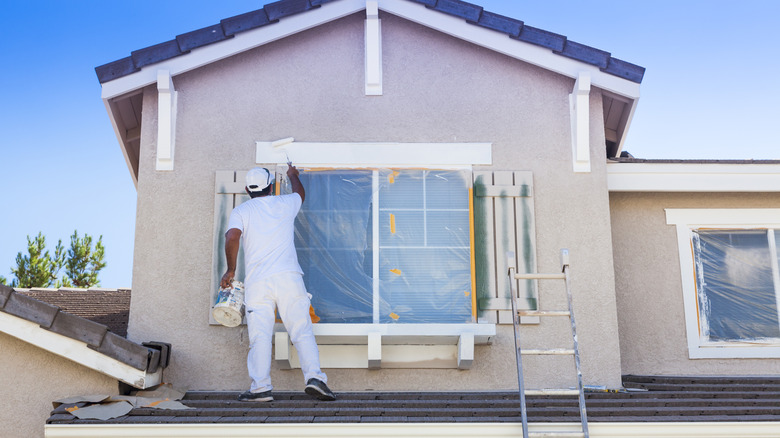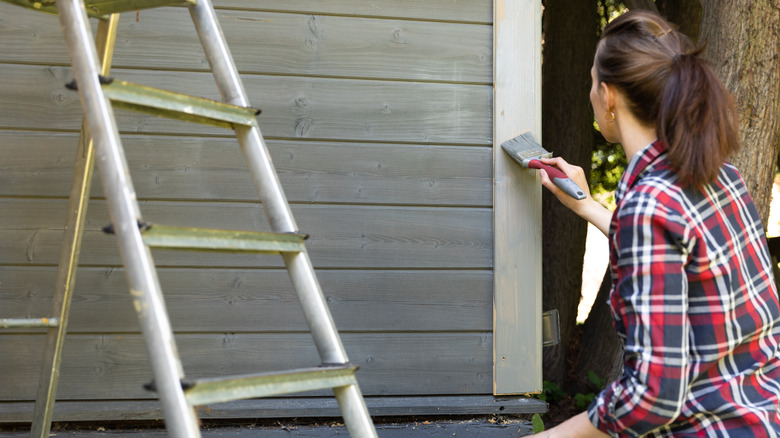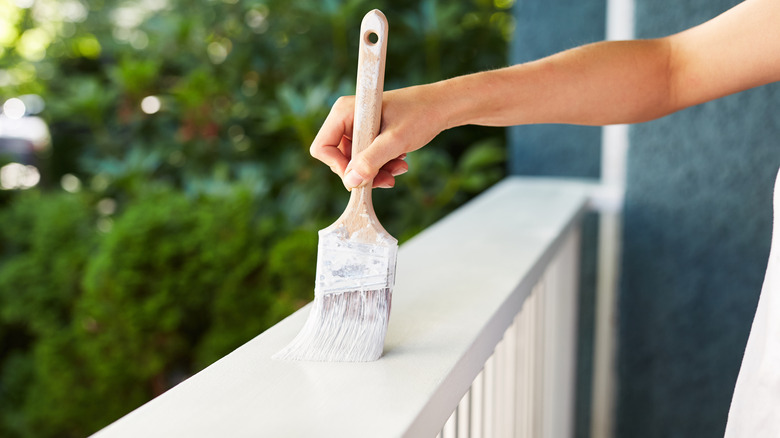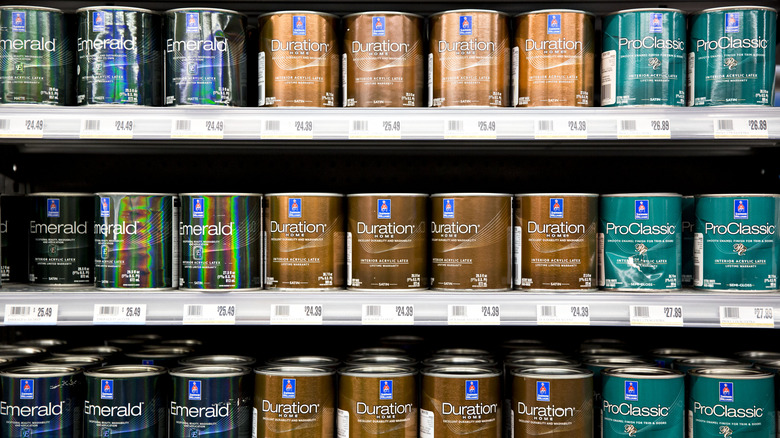Here's How Often You Should Be Repainting The Exterior Of Your Home
Just like painting a room inside your house, painting your home's exterior is an easy way to completely transform the look of your humble abode. There are many reasons a homeowner may want to repaint the outside of their home. Maybe they'd like to try a new color to upgrade the aesthetic. Perhaps the previously-applied coat of paint is peeling or chipping away. Or, maybe they're preparing to sell their home and want to increase the property's curb appeal. Whatever the reason, it's important to know the basics of exterior painting before initiating the process for your own home.
While painting your house can be an exciting task for DIY fanatics, the duty is also a huge responsibility. Painting a building exterior can be a big hassle that can put a strain on your wallet and your health, if you choose to complete the job yourself. An exterior paint job can also make or break that curb appeal, according to Tribble Painting Company, so make sure to choose colors and formulas wisely in order to give your home a makeover that will put you in the best position to sell. If you're clueless on where to start in your repainting process, here's how often you should be painting the exterior of your home.
What affects a home's paint job
All homes require a new paint job at some point, but some houses will need a touch-up sooner than others. Sherwood Painting says that the lifespan of an exterior paint job depends on many factors, and one of the most significant is weather. In fact, prolonged exposure to the elements is one of the most prominent sources of damage for exterior paint. This can include rain, snow, wind, and even direct sunlight. Another factor that affects the lifespan of your paint is the climate in which your home is located. The temperature and humidity of your area play a large role in how quickly exterior paint deteriorates around your house. Those living in wetter climates may require more frequent paint jobs, since consistent exposure to moisture can cause paint to break down faster.
The type of exterior paint a homeowner chooses matters too. Using a cheaper paint brand or formula may seem like a smart financial decision initially, but these types of paints wear away faster, which could lead to a homeowner spending even more money to peel off the old paint and begin again from scratch. CertaPro Painters states that peeling, bubbling, cracking, and fading are all tell-tale signs that a home's existing paint is damaged and needs a touch-up.
When to repaint your home's exterior
According to Sherwood Painting, the average home requires a new paint job every five years. However, a combination of many factors can prolong or shorten the amount of time a homeowner should wait to schedule a repainting. CertaPro Painters states that the standard home could last up to 10 years without needing new paint, but this timespan can fluctuate depending on the quality of paint applied and the skill of the painter who applied it.
A home's external features usually need to be repainted in increments, since building materials generally face wear and tear at different rates. CertaPro Painters says wooden surfaces should be repainted every three to seven years, while aluminum siding should be repainted every five years. Sherwood Painting recommends repainting stucco siding every five or six years. Brick and cement, however, have longer timespans, with brick only needing a touch-up every 15 to 20 years, and cement requiring one every 10 to 15 years.
How to choose an exterior paint formula
One of the most difficult steps in the painting process is deciding which formula to work with. Since there are so many varieties to choose from, the selection can certainly be overwhelming for someone with little to no painting experience. If you choose to hire a professional painter to complete the job for you, they will typically assist you in picking a color, brand, and finish that will give you your desired look, notes Chesapeake Painting Services.
According to Lowe's, exterior paint comes in two distinct types that differ according to mixture: oil-based and water-based. Oil-based paint dries slower than its thinner counterpart, but offers stronger protection against the elements and other destructive forces. Trico Painting recommends using a water-based formula, also called a latex paint, for most of your home's exterior surfaces, including wood, metal, siding, and stone. It's also important to choose a finish for your paint, which determines how shiny the formula will appear in direct sunlight. Finish options include: gloss, semi-gloss, satin, and flat. Satin and flat finishes are mostly used for exterior paints in order to hide imperfections and avoid unsightly glares caused by bright light. Other paint elements you should consider when picking a formula include blister resistance, color retention, and chalking resistance.



